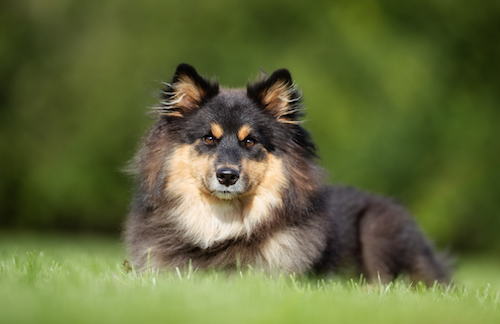
They are the only indigenous people recognized by the European Union, a culture that dates back tens of thousands of years. Molded by the unforgiving conditions of life around the Arctic Circle, they survived early on by fishing and hunting, but later, they relied on a commodity that today in Finland alone covers 36% of the country, primarily in the northernmost areas of Finland. Currently, there are estimated to be about 203,700 reindeer and 5,000 reindeer owners, and of those owners, around 1,000 are Sámi. In fact, the Sámi – or Saami – people are believed to be the first in the world to begin herding, taming, and breeding reindeer.
The Sámi followed the herds, hunting them as they needed. They used tamed reindeer to pull their sleds, feed their families, clothe themselves, and then to lure wild reindeer into their herds. To help them hunt and corral the reindeer, they used what today we call the original Laponian dog; archeological digs in Lapland that have unearthed skeletal remains of Lapponian dogs indicate just how long this partnership between the dogs and the Sámi has existed. The remains are estimated to date back prior to 7000 BC.
These dogs went from hunting reindeer to herding them, but early dogs exhibited very little uniformity in appearance other than the description that old Sámi writings provide: Long bodied, long hair, a tail that curled up over the back when moving and varied color, though over time, coloring came to be influenced by what worked “in the field:” White dogs were difficult to spot in the snow, and grey dogs resembled wolves from a distance. A black dog with “four eyes,” was the most common coloring, what we now call tri-colored markings in the Finnish Lapphund.
The Finnish Lapphund of today can rightfully, if not euphemistically, be regarded as a “rainbow breed” as all colors are permitted, the only stipulation is that one color must dominate. Put another way, one color that consists of bands of different colors on a single hair shaft (sable, wolfsable, or domino) must cover the body. Secondary colors are allowed on the head, neck, chest, underside of the body, legs, and tail. Indeed, the majority of all known canine colors and patterns – and several slightly different variations – can be found in Finnish Lapphunds. Interestingly, just merle and silver are missing totally.
A marvelous overview of colors in this breed written by Liisa Sarakontu can be found here.

I love that you are presenting information on the Finnish Lapphund! It might be useful to read the research if anthropologist, Dr. Myrdene Anderson, on the Sámi, and history of the breed. She has been researching the Sámi people, culture, and dogs since the 1960’s. Tri-colour Finnish Lapphunds were not traditionally the most common colour of the Finnish Lapphund. Solid or mostly black and red Lappies were quite common. Because breeders from the South found the secondary markings interesting, the Sàmi farmers could sell the dogs for more money. The Sàmi call the eye brows, “pennies.” The Southern Finnish and Scandinavian fascination with marked dogs is why we have many Lappies who are not solid colour today. This is different than the breed history currently being presented in the US, despite the fact that Dr. Anderson is also American, and owned a Lappy when she was living in Norway in the 1970’s.
Thanks again! I just want to offer you a piece of history which you might find interesting, and also might not know about with your own research.
There is also a shorthaired Lapponian Dog. The Longhairs official Finnish name is: Lappinkoira and the shorthair: Lappinporrokoira. It seemed that the longhaired species were mostly found on the tundra, a prairietype landscape with grass and not much trees, and the shorthaired dog more on the taiga, the bushy type of landscape. The longhaired were protected by their thick fur against the arctic wind while the shorthaired dogs moved more easy through the bushes. Originally they were one breed with two types of fur and both types could be found in a litter. What counted was if a dog was suited for the work. Now they are separate breeds. But both lovely and kind. The colours in the shorthaired Lappinporrokoira, or “Porro” for short, are dark, black and tan or brown with tan. As they don’t have a curly tail like the “Lappie” they resemble the Australian Kelpie.
Fabulous comment, Elly, thank you. You’ve inspired us to look into this further and do a future post on the shorthaired lapponian!
Very cool! I was looking up the ‘four eyed dog’ that was regarded as very sacred in ancient persia and ran into this by accident.
Nice dog. Good to learn more bout the Sami too.